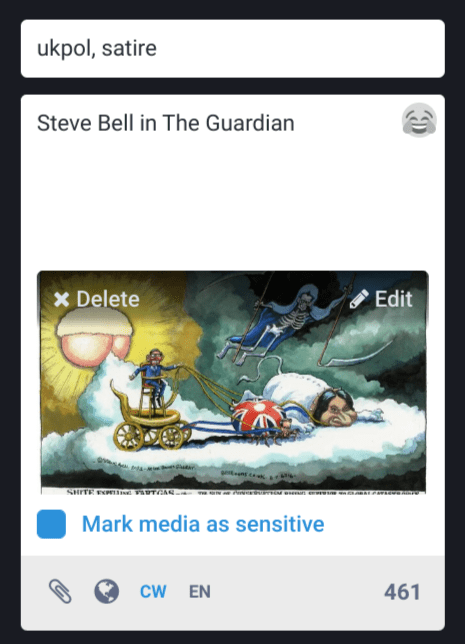Let’s say you’re going to set up a new WhatsApp, Signal, or Telegram chat for a group of people. It could be for family members, it could be for friends, or colleagues. It could be, which is a very familiar scenario for Team Belshaw, the way in which you find out when and where your kids sports matches are.
These chats have ‘admins’, people who have the power to change things like:
- Group avatar/icon
- Group name
- Group membership (i.e. adding / removing individuals)
- Deleting messages
- Setting whether messages disappear after a set time
Perhaps most of the time, there’s no problem. But things can go spectacularly wrong, as I’m sure you’ve either experienced yourself, or heard about from others.
The above example is of people who already have something in common, or some kind of relationship that precedes the setting-up of the group chat. While I can imagine the manager of a sports team mentioning that participation in the chat is subject to the club’s privacy policy and code of conduct, you wouldn’t really do that for chat groups for friends and family. It would be weird.
Now let’s talk about places which are set up for conversation where the context is different:
- Most people don’t know one another
- They can talk among themselves, but also with people outside the group
- When they talk with people outside of the group, the carry some of the group’s identity
Yes, I’m talking about the Fediverse. And, specifically, I’m talking about codes of conducts and ‘server rules’. Just as contracts are usually there to be referred to when things go wrong, so the server rules are there for when something goes awry.
If you’re a straight, middle-aged, white guy (like me!) playing life on the easiest difficulty setting, it might seem annoying to have to come up with server rules when you just want to set up a new Fediverse instance. Can’t everyone just be cool and get along? Well, frankly, no.
Conflict in social situations is inevitable; it’s the way that you handle each incident that matters. If you run a Fediverse instance with essentially no (or very few) rules, people playing life on harder difficulty settings won’t join. Moreover, some other servers might proactively block your instance. And even if they don’t, any small infraction from any of the people on your instance will lead to a look at the server rules. If you don’t have any/many, it’s likely to get blocked.
Most good codes of conduct are Creative Commons licensed. That way, we can built upon one another’s work. The one for exercise.cafe can be found here, and exists largely thanks to the work of people more experienced than me. Like the Mastodon Server Covenant it’s not perfect, but provides a base layer for building a code of conduct that works for communities.
So if you’re setting up a Fediverse instance, be as intentional about the server rules as you are about the technology choices you make! Think about the behaviours you want to encourage. Read and learn those written by those running successful instances. Endeavour to create a moderation team with documented workflows as soon as you can. That way, it won’t be just people like me who feel safe and included — it’ll be everyone!

